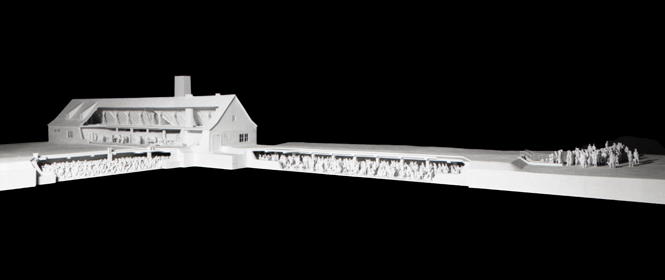
Remembrance can take different forms: how the atrocities of the Holocaust are reflected upon more than 70 years later
At this time of year, we commemorate the millions of people who lost their lives as a result of premeditated mass murder committed by the Nazis. On 27 January 1945, Soviet troops liberated Auschwitz death camp. More than a million people were murdered in what was the largest extermination camp built by the Nazis. They were gassed, shot or hanged – or died as a result of abuse, torture, illness, malnutrition and the consequences of forced labour. Today, Auschwitz is synonymous with the Holocaust – the genocide perpetrated against the Jewish people. Former German President Roman Herzog made 27 January a day of memorial; since 2006, the victims of the Nazi regime have been commemorated around the world.
Auschwitz was the largest German extermination camp. From the beginning of 1942 until the camp’s liberation, Holocaust trains brought Jews from almost every part of Europe to Auschwitz. However, the Germans struggled to remember this place of death and destruction. Even though the Second World War had long since ended, “Auschwitz” was still largely unheard of in Germany. The word, which has since become synonymous with the genocide committed by the Germans during World War II, only seeped into the nation’s consciousness in the early 1980s.
Selfies in front of the crematorium
Nowadays, more than 70 years after the end of the Second World War and the terrors of the Nazis, places that once bore witness to the crimes of murderers and torturers have become tourist magnets. The Auschwitz Memorial and Museum recorded more than 1.7 million visitors in 2015.
The people who come to the places where the horrors were originally perpetrated behave in all kinds of ways. Some pose in front of the “Arbeit macht frei” sign, some take photos of it, some look around in bewilderment, some talk. They are, after all, tourists – even here. They are the subject of the 2016 film “Austerlitz” by Ukrainian film-maker Sergei Loznitsa. The film features an almost exhausting series of shots of day-to-day tourism at the former concentration camps of Sachsenhausen and Dachau.
Another project is the Internet platform #Uploading Holocaust. This looks at the way young Israelis respond to the idea of remembrance and their feelings during a visit to a concentration camp memorial site. At the same time, users are also asked about their own visits to former concentration camps. The accompanying documentary of the same name, which was first shown in 2016 at DOK Leipzig (International Leipzig Festival for Documentary and Animated Film) and will be broadcast on rbb on 24 January and on 3sat on 7 February, brings together the YouTube videos made by the young people on their trip to Poland. As you watch, you accompany them as they trace their own history, remember the victims in their own families and question their own ability to experience “real feelings”.
A crematorium in white: Auschwitz model in the permanent exhibition of Deutsches Historisches Museum
One of the main reminders of the atrocities committed by the Nazis is a model of crematorium II at the Auschwitz-Birkenau extermination camp by Polish artist Mieczysław Stobierski (1914–1998). It aims to portray the mass murder of people that took place during the Second World War. SS officers with dogs guard a long line of people and escort them to an underground room, where men, women and children alike undress. The next room along is the gas chamber. People throng as they scream and die. Above, the corpses are burned in the crematorium by prisoner work units (known as “Sonderkommandos”); dead children pile up in one corner.
Every aspect of the model is white: the crematorium, the gas chambers, the ovens, the SS officers, the living and the dead. The model documents what happened – but is also an artwork. Visitors can recognise the faces of the murdered, whilst, at the same time, trying to imagine the death machine of Auschwitz, which murdered its victims indiscriminately. The piece symbolises what happened; it is factual yet emotive.